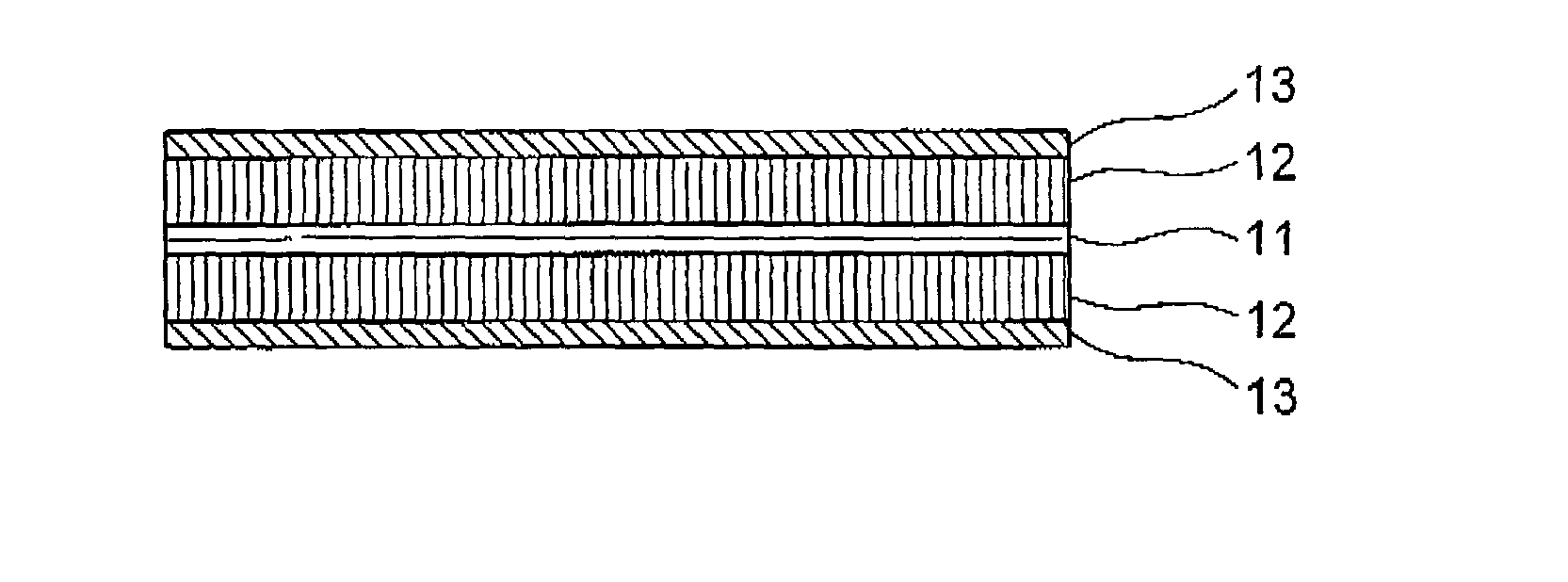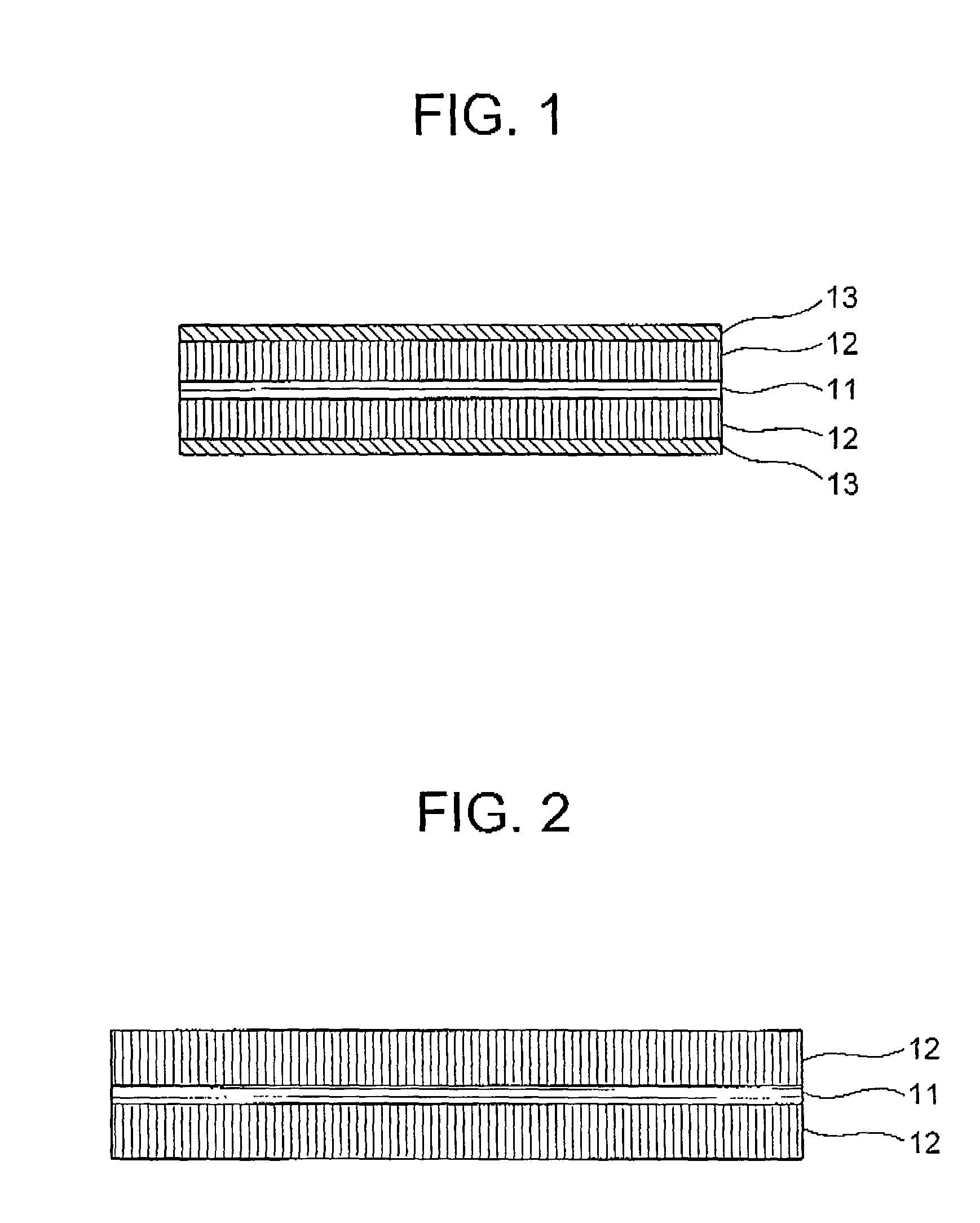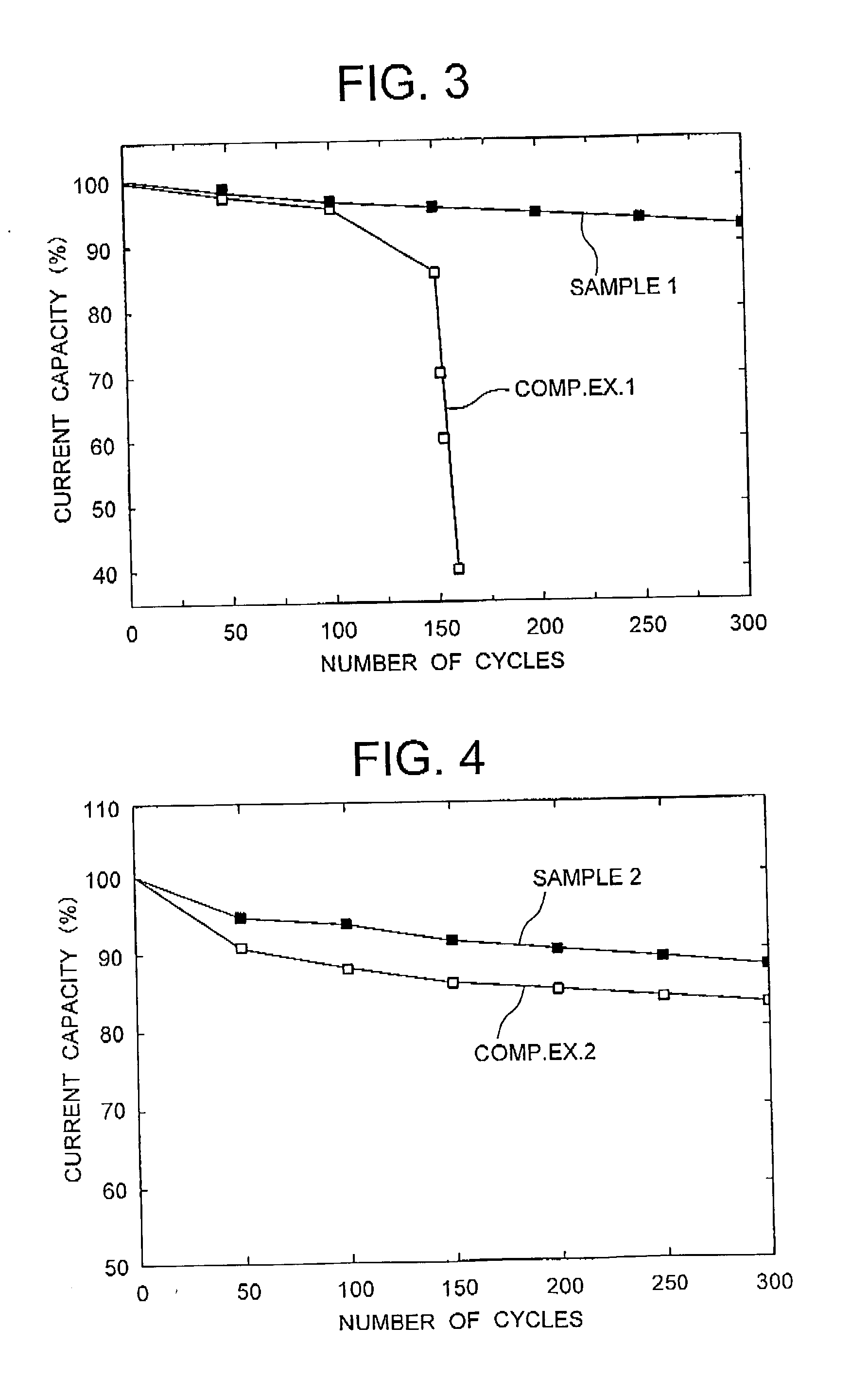Anode for a secondary battery
a secondary battery and anode technology, applied in the direction of non-aqueous electrolyte accumulator electrodes, cell components, basic electric elements, etc., can solve the problems of short-circuit failure, conventional lithium electrodes have problems, and the cycle characteristics of the battery are reduced
- Summary
- Abstract
- Description
- Claims
- Application Information
AI Technical Summary
Benefits of technology
Problems solved by technology
Method used
Image
Examples
first embodiment
[0078] Referring to FIG. 1, an anode, fore use in a non-aqueous-electrolyte secondary battery, according to the present invention includes a collector 11, active material films (or bodies) 2 formed on both surfaces of the collector 11, and a DLC film 13 formed on each of the active material films 2. The collector 11 functions as an external electrode for extracting current from or introducing current into the anode during discharging and charging the same. The collector 11 may be formed as a metallic foil made of aluminum, copper, stainless steel, gold, tungsten, molybdenum or titanium, for example. The active material film 12 functions for occluding or releasing lithium during charge and discharge of the battery. Examples of the material for the active material film 12 for the anode include lithium metal, lithium alloy, lithium-occluding metal, lithium-occluding alloy, metallic oxide, graphite, fullerene, carbon nanotube, and a mixture or combination thereof. The DLC film 13 is dep...
second embodiment
[0125] Referring to FIG. 18, an anode according to the present invention, for use in a non-aqueous-electrolyte secondary battery, includes a collector 21, an active material film 22 formed on each of both the surfaces of the collector 21 as a powder layer including powder particles, and an overcoat 23 covering the surfaces of the powder particles of the active material.
[0126] The collector 21 is made of metallic foil having electric conductivity, such as aluminum, copper, stainless steel, gold, tungsten, molybdenum, and titanium. The active material 22 film may be made of lithium alloy, lithium-occluding metal, lithium-occluding alloy, metallic oxide, graphite, fullerene, carbon nano-tube powder, or a mixture thereof. The overcoat 23 covers the surface of each of the powdery particles of the active material in this embodiment, and is made of DLC or amorphous carbon.
[0127] In operation of a non-aqueous-electrolyte secondary battery having the anode according to the second embodiment,...
PUM
| Property | Measurement | Unit |
|---|---|---|
| frequency | aaaaa | aaaaa |
| diameter | aaaaa | aaaaa |
| diameter | aaaaa | aaaaa |
Abstract
Description
Claims
Application Information
 Login to View More
Login to View More - R&D
- Intellectual Property
- Life Sciences
- Materials
- Tech Scout
- Unparalleled Data Quality
- Higher Quality Content
- 60% Fewer Hallucinations
Browse by: Latest US Patents, China's latest patents, Technical Efficacy Thesaurus, Application Domain, Technology Topic, Popular Technical Reports.
© 2025 PatSnap. All rights reserved.Legal|Privacy policy|Modern Slavery Act Transparency Statement|Sitemap|About US| Contact US: help@patsnap.com



